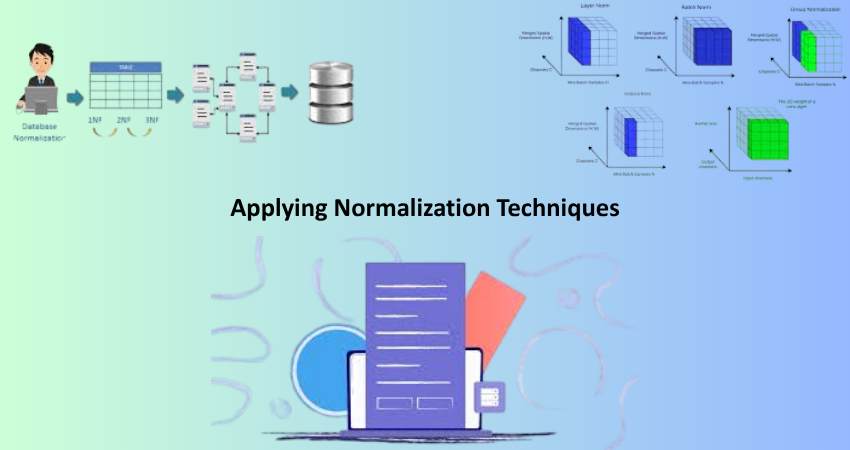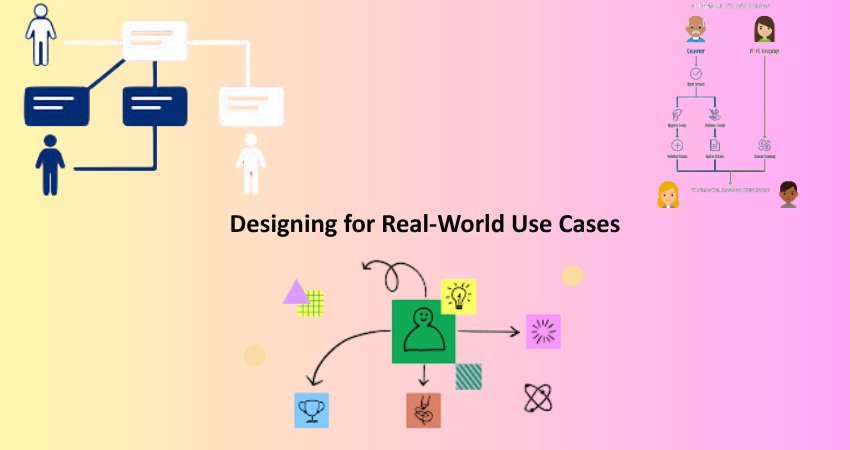
Introduction
As you know, the foundation of any software development is basically the relational database design used to properly store and administrate the data. Whether the application concerned is a simple blog or a more complex enterprise application, a proper database design attends to integrity, scalability, and ease of access and maintenance of the data. The relational database consists of a model where the data are represented and stored primarily within a structure or design based on tables (relations) that group data in rows and columns. The relationships among these tables are usually defined by keys whereas some normalization rules take care of maintaining the structure. Not only database administrators should understand these principles, but also developers, analysts, and architects who are involved directly in the design aspects of applications from a data point of view. Getting hold of this fundaments sets a good stage for smooth data workings and life of the application.
Furthermore, it is said that a database-typed system is as good as its underlying structure. The poor design of a database can lead to the positioning of redundant data entry, inconsistent entries, longer query time, and rigidity towards its modern needs. On the other hand, a well-established design would always ensure best optimization and maintenance of data. This article discusses several basic principles of designing a relational database. It will touch on topics like data modeling, normalization, keys and constraints, and the pressing need to understand the business logic behind the data. Mastery of these principles will place you in a position to build databases that serve as a strong backbone to any sort of software system. The objective is to provide you with relational database design skills that fulfill current requirements while remaining flexible enough for future growth and further changes in technology.
Understanding Data Modeling and Entities
Identifying Entities and Their Relationships
In the relational database design methodology, the primary step consists of identifying the entities representing the core objects or concepts in the application domain. An entity could be a customer, an order, a product, or any tangible or intangible object the system needs to keep track of. These entities provide the basis for your tables. Data modeling seeks to convert these real-life objects into entities with well-defined attribute sets in the database. For example, attributes associated with the “Customer” entity could be CustomerID, Name, Email, and Phone Number. Clearly defining entities allows the database to correspond with the real business processes, thus ensuring that the information needs of shareholders are accurately met.
In any view, associations among entities are very important. These could be one-to-one, one-to-many, or many-to-many. A very good example would be a customer placing orders-a one-to-many relationship-or any order belonging to a single customer. In the case of many-to-many, a common resolution is a junction table-for example, a student may enroll in many courses. Getting relationships correctly is important so that your database can accurately model real-life interactions, which can be queried and reported upon. On the flipside, incorrectly identifying the relationship can lead to ambiguity, duplicate data, or integrity problems, which diminish the effectiveness of a system. Therefore, by investing time in comprehension and formal definition of relationships between entities, one will have a stronger and more meaningful structure for one’s database.
Creating an Entity-Relationship (ER) Diagram
Once entities and relationships are identified, work proceeds on the creation of an Entity-Relationship (ER) diagram. This diagram maps the structure of the database with the various entities relating to one another. It aids in clear communication of ideas to developers, stakeholders, and database architects alike.In an ER diagram, entities are represented as rectangles, attributes as ovals, and relationships as diamonds. Lines are drawn among the items to demonstrate the way data is structured and related. Such a visual reference ensures that every participant has a common view of the data model and its relevance.
An ER diagram shows a blueprint of database construction. It reveals defects in design at an early stage, such as missing relationships or unnecessary complexity, and also ensures abstraction to form teams. Moreover, future changes are easily managed by ER diagrams. As the business changes, visual models will show where modifications are necessary and how they affect other parts of the schema constructed. A well documented ER diagram creates a reliable, scalable, and maintainable database according to the complexity of these real-world applications. These proactive measures stop miscommunication within the development process and, because of this, reduce the number of expensive revisions.
Applying Normalization Techniques

First, Second, and Third Normal Forms
Normalization is a process that organizes database tables for better data integrity as well as redundancy minimization. It generally involves levels known as normal forms. First normal form (1NF) calls for atomicity in all table columns by requiring indivisible values and disallowing repeating groups or arrays. This ensures that each field contains only one piece of information. Second normal form (2NF) modifies this requirement by stressing the fact that each non-key column requires full functional dependence on the primary key for exclusion of partial dependency. Thus, the same data is not repeated within a table. Proper normalization also ensures that the anomalies in data are reduced; consistency in retrieval goes hand-in-hand with normalized data.
The third normal form carries on to eliminate the transitive dependencies-that means that a non-key attribute is keyed by other non-key attribute. For instance, if a table has EmployeeID and DepartmentName, and DepartmentName is derived from DepartmentID, that will be separated out into a different table. For all those purposes, normalization makes updates easier, it minimizes the occurrence of anomalies and facilitates a simpler data model. When normalization is done, however, it needs to take place in such a way that creates simple joins because it can also practically fragment the related data. So these rules of normalization in general serve as a general guide to forming logical, efficient, and easier-to-evolve relational schemas.
Balancing Normalization with Performance
Data normalization is one of the methods by which data integrity can be preserved as well as redundancy minimized. However, with excessive normalization, performance is sometimes compromised, especially when such normalization results in a very high frequency of joins. There is a need for normalization to consider practical performancescenarios. Sometimes, denormalization, which includes intentional redundancy, would help in speeding up queries or simplifying reports. For instance, to help in speeding up and simplifying invoice generation, customer names can be stored directly in an order and could also be matched in the customer table. This trade-off is, however, perennial and desired for actual applications, mainly where traffic is heavy.
Consideration must be given to read/write ratios, join frequency, and the types of queries that the application will perform when making the decision of how far to normalize. Star schemas may be beneficial for any analytical-type queries, while transactional systems may benefit by normalized models. However, one can also add sufficient indexing, caching, and query optimization techniques to offset any introduced performance concerns associated with normalization. In the end, a balance must be struck between a clean, logical structure and real-world application and user needs. A well-considered database design considers theory along with its practical operational limitations.
Keys and Constraints: Enforcing Data Integrity
Primary and Foreign Keys
Primary keys help identify records in a table uniquely as well as act as reference points for other data. A primary key, either through a standalone column or the combination of two or more columns, must be unique and not null in each table in a relational database. Selecting the appropriate primary key becomes all the more significant. Natural keys (e.g., email address, Social Security Number) come from the data and surrogate keys (auto-incremented Ids) are generated by the system. Apt usage of surrogate keys is mostly promoted in simplicity and flexibility. Changing values or composite complexity can be avoided.
Foreign keys create relationships between tables by referring to the primary keys of other tables. An Order table, for instance, could contain a foreign key CustomerID which points to the Customer table. Foreign keys enforce referential integrity, thus a record in the child table cannot exist without a correspondingly valid record in the parent table. This keeps the database consistent and prevents orphaned records. A good key structure strengthens the data architecture and helps ensure that query results are accurate. Foreign keys are a window into logical dependencies between data, which is an important concern for analytics and application behavior.
Constraints for Validation and Integrity
Column constraints are conditions that make sure that the information belongs to that column in a table column. Generally, there are types of column constraints: NOT NULL-prevents from giving null values, UNIQUE-makes sure that every entry in one column differs from the others, CHECK-restricts the values to be accepted within some ranges or formats, and DEFAULT-without giving any value, it assumes to give a particular value as default. These constraints form the first line of defense against invalid or inconsistent data entering the database. For example, a CHECK constraint on an age column might ensure that values are only accepted between 0 and 120. Furthermore, constraints create a location to enforce business logic at the database level rather than relying on application-layer checks alone.
By applying constraints, one can lessen the need for validation in the application layer and create a system that is much stronger and more secure at the database level. They improve maintainability by defining rules for validation right at the schema level. While not strictly constraints, indexes go a long way toward ensuring usability and performance within the speeding up of searching, sorting, and filtering of data. Keys and constraints together form the framework of reliable data in relational databases over time, in that they sustain the consistency and the meaningful nature of the data. Their role can not be overstressed as far as accurate reporting and compliance are concerned, particularly in some industries that are highly regulated with respect to data governance and compliance.
Designing for Real-World Use Cases

Mapping Business Logic to Data Structures
Successful databases represent the logic and needs of the corresponding business. Therefore, designers of a system must have a thorough understanding of the workflow, rules, and objectives before pulling together a schema. In an inventory system, for example, it is important to have the relationships among product quantities, locations, restocks, and sales transactions established. You probably need tables for Products, Warehouses, InventoryLevels, and Orders, all designed around how the organization actually operates. Proper modeling creates the foundation for more meaningful reporting and trustworthy automation, both of which are critical for success in competitive industries.
Creating a data model not in accordance with the type of business logic leads to misleading information and operational problems. Involving stakeholders during the design phases, be they business analysts, operations managers, or marketing leads, assists in uncovering hidden rules and rare edge cases. That said, documenting business logic in the schema may benefit future developers by allowing them to maintain and extend the system. The closer the data model gets to fulfilling business objectives, the more value the database delivers in return. Furthermore, it will ensure that over time the way the business processes can remain geared merely to ensure relevance and efficiency of the system.
Designing for Scalability and Change
A business is never stagnant, and so neither should be its database. Future proofing if necessary when designing can eliminate costly rework later on. The most common way of doing this is modular designs, nullable columns as optional fields, and extensible relationships. Do not take in any assumptions in the schema but rather use lookup or configuration tables for storing such data. For instance, ‘whenever payment methods are in most cases going to change’ the creation of an additional PaymentMethods should be possible without touching the heart schema. This will proactive much down time and serve the prompt business changes.
Versioning strategies like maintaining an AuditLog table or soft deletes build data tracking and rollback capabilities. Partitioning large tables, sharding data at a database level, or introducing read-replica setups can help scale systems when data volume increases. Regular assessments of usage patterns, access requirements, and storage performance ensure that this database is allowed to develop alongside the application. Building with change in mind promotes resilience in every way-in the short term, fulfilling specific goals; but mainly in protecting long-term interests. Future-proofing your infrastructure protects the uptime of application resources, should demands surge from increasing traffic or expedited growth.
Conclusion
Above all, relational database design principles are an amalgam of technical logic and the soft understanding derived from experience. When the above knowledge regarding entity modeling, normalization, keys and constraints, and schema alignment with the business context is combined with an application developer’s or data personnel’s ingenuity, it equips them to exercise good design for sturdy, flexible, and forward-looking systems. Good design is the result of planning, collaboration, and iterative development, but its making is not chance-based; it is thoughtful. If done right, good design then becomes a strong holding base for the lifetime of an application, ranging from prototyping to continuous maintenance in production and all in between.
These principles will help in enhancing both performance and quality of data while allowing teams to develop applications that can increase and change with time. Relational databases in an ever-increasing data-driven world are more than just technical assets to become a strategic advantage. Applying these principles will apply whether launching the development of a whole new system or improving upon what has already been put into place. This will ensure that the database serves as a strong foundation for innovation and success in time. Strong database design is eventually translated into more accessible decisions, higher customer satisfaction, and more sustainable technology ecosystems.